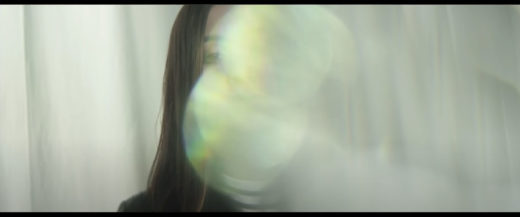
Having now spent well over a century trying to improve the performance of photo gear, it seems strangely appropriate that we now seem equally dedicated to creatively messing it up again. There are many ways to do that, although the approach people most like to discuss over brandy and cigars involves lenses worth more than your organs which are creative in very specific ways.
Those are expensive, though, and if it’s expensive, it isn’t cheating
Improvising glitter
It’s a field that’s ripe for improvisation. There are optical filters out there which have bits of wildflower seed in them, some which seem to be a piece of metal with an elliptical hole, and even pieces of lead crystal on a stick, designed to scatter glints into the lens and perhaps excite a flare-provoking filter. In 2021 we can get away with claiming that almost anything that gets caught between a couple of pieces of optical glass is a valid effect.
The most accessible of those effects are often pretty bold, and thus most suitable for the skin cream ad (ooh, sparkly!) or music video (woah, glitzy!), although there are always flare-filled exceptions in the world of long form entertainment. The Expanse suspended glitter in a fluid-filled tank in front of the lens to simulate a science-fiction eye condition that in the real world is only suffered by cosmetics commercial directors.
Like the other things we’ve discussed in our series on sleight of hand, these effects are difficult to simulate digitally, at least with any degree of verisimilitude. The Particular plugin for After Effects can easily scatter some reasonably convincing fairy dust around the frame, but it won’t react to light and camera motion in the same way as real dust motes. Chunks of lead crystal magic-armed off the mattebox and hovering just out of frame can reflect and refract in complex ways as the camera pans and tilts. Lens flares, in particular, are difficult to locate to the centre of a real-world light source which may look like a large area of white clipping.
Glitter off the peg
Having said that, one particularly good trick for cinematographic charlatanism is to shoot a selection of flare and glitter effects against a black backdrop, and composite them later. That can save a lot of time on set while the camera department tries to figure out the ideal positional relationship between the camera, a flashlight, and the entire contents of the Swarovski catalogue. Shoot at your leisure against black, then composite to taste; we naturally lose the interaction with the scene, but that must be OK at least sometimes, or nobody would ever be able to sell lens flare stock footage. Which they do. Lots.
Either way, real-world, organic effects are much sought after in this post-film reality, which is why the commercial options exist at all. The good news is that many of the tools are readily improvised, from the old-school approach of vaseline on the lens (please don’t actually do this) to stealing the lid from a crystal decanter (do this, but put an upturned glass over it in the meantime). It’s possible to buy precision optical flats onto which things can be mounted, but honestly, if you’re going for weird anyway, perhaps start off with a bit of an old fish tank.
No-notice glitter
Glittery optical effects can even be done with almost no extra equipment at all. The spectacular focus gradients of a tilt-shift lens can be emulated by, er, tilting and shifting the lens, which can be done by easing it out of the mount by hand. It’s at this stage most people learn how crucial flange focal distance can be; rock the lens even fractionally out of position, trying not to drop it, and we find ourselves immediately into almost fun-house levels of optical distortion. This has been called “freelensing”, but it’s really nothing more than was ever done with bellows cameras back in the day. Excite things with a point light source; a cellphone light works.
The battery will fail at a crucial moment, of course, so perhaps use something more reliable. As with so many real-world, organic cinematography techniques, this sort of thing can start to cross over into production design. Establish the vampire’s lair by shooting through that decanter full of deep red liquid; emphasise the magic of the eau de toilette by shooting through the bottle as it rotates in a beam of light. Lighting is another matter; nothing shines without photons to refract, and what’s more, those refracted rays can go on to do other interesting things too.
Perhaps that’s a subject for another day, but for the time being we now know enough to spend an entertaining afternoon to be had testing different ways to create images that hover on the hairy edge between mysterious and broken.
